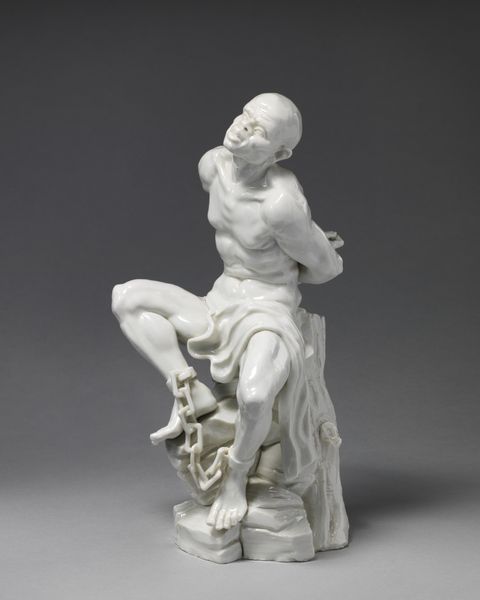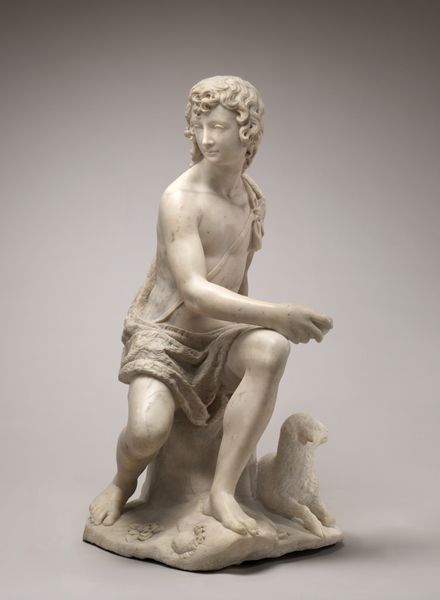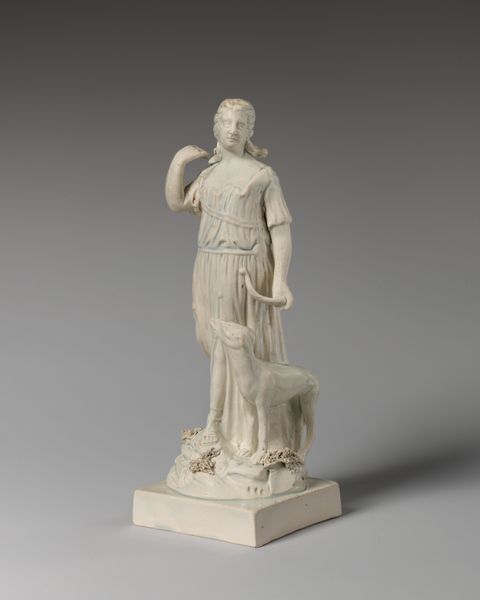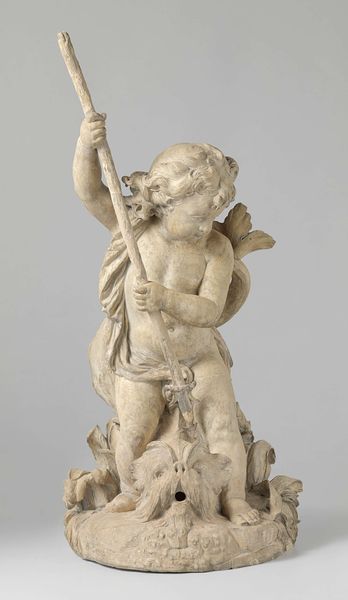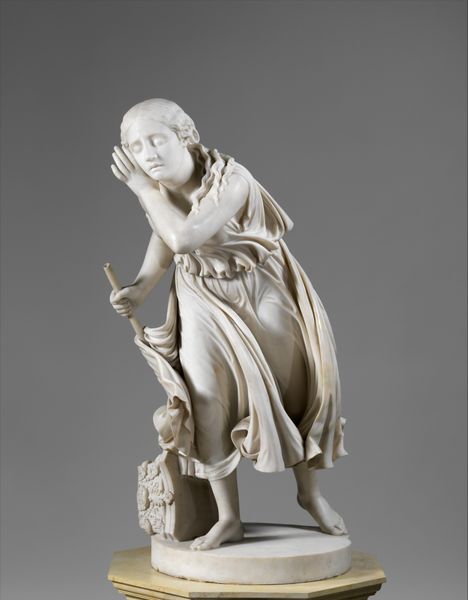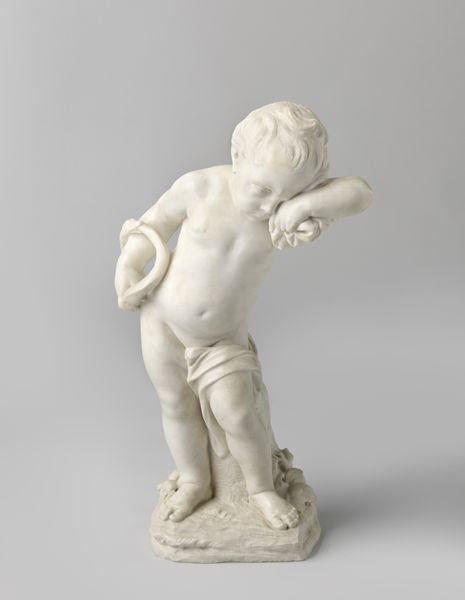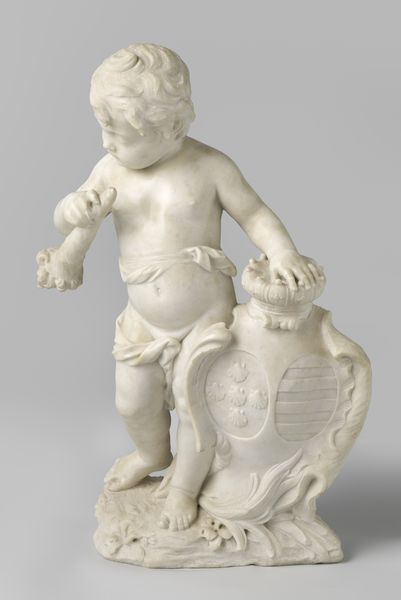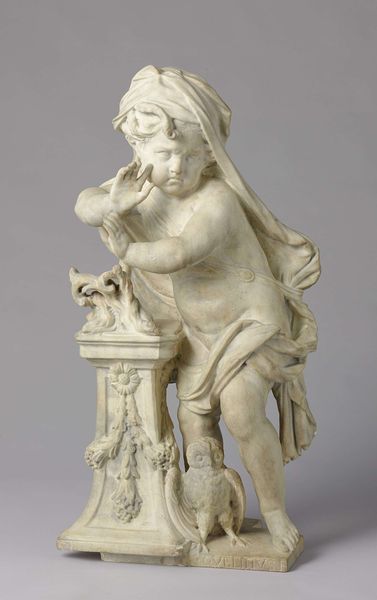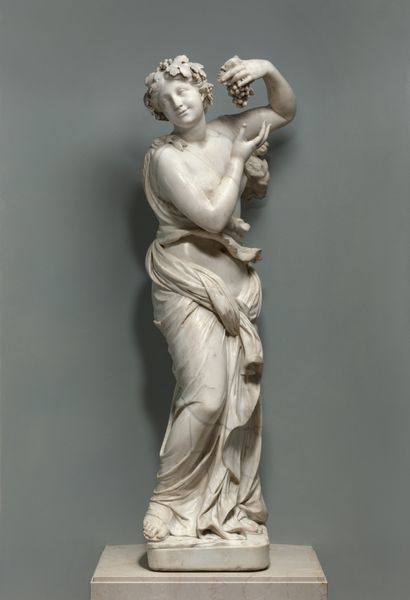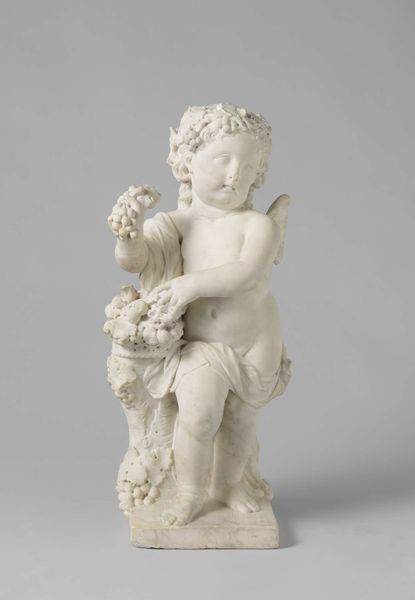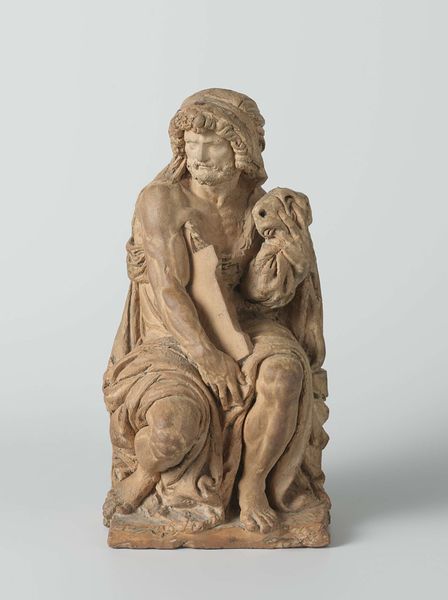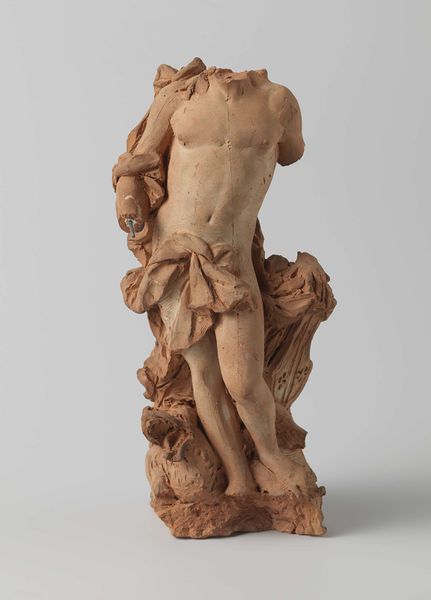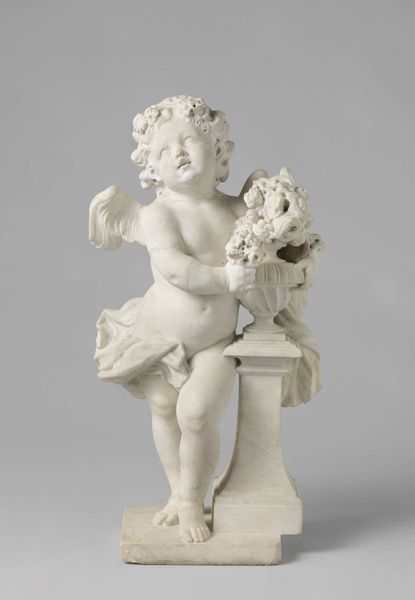
sculpture, marble
#
neoclacissism
#
sculpture
#
classical-realism
#
figuration
#
sculpture
#
marble
#
statue
Dimensions: 47 x 20 x 24 in. (119.4 x 50.8 x 61 cm)
Copyright: Public Domain
Curator: Standing before us is "Genius of Mirth," a marble sculpture created by Thomas Crawford between 1842 and 1843. Editor: Mirth, you say? At first glance, the somber downward gaze and the muted pallor of the marble convey a sense of melancholic introspection more than outright joy. Curator: Indeed. Consider, however, the carefully wrought composition: the delicate tilt of her head, the gentle drapery clinging to her form, the placement of the tambourine at her feet and the castanets she examines. Crawford masterfully utilizes contrapposto, subtly shifting the figure's weight, animating the static marble with latent energy. Editor: While I admire Crawford's technical skill evident in the smooth, almost translucent quality of the marble and the realistic folds of the garment, it is impossible to overlook the work's engagement with nineteenth-century ideals of feminine virtue and the sentimental cult of sorrow so prevalent in Victorian society. Is her contemplation a joyful thing or one based on sadness? Curator: Note that wreath of flowers adorning her head. Semiotically, that adornment signals triumph and festivity. The downturned eyes may be reading the space and potential from whence the “mirth” shall spring from; to simply express mirth outright in pose, one may argue, would negate the ‘genius’ it’s so aptly ascribed. Editor: I understand that the tambourine and castanets were emblems of celebration in the period. And if we contextualize this within the artist's biography—his move to Rome, his immersion in the artistic circles there—it offers insight into a broader narrative about American artists seeking inspiration and validation in European traditions. How does that context bear on her seemingly complex expression? Curator: Indeed. And observe the detail within the curvature of her body, this creates subtle, visual echoes, binding form to symbolic content. It underscores how Crawford melds neoclassical precision with a distinctly Romantic sensibility. Editor: In other words, is Crawford speaking to his audiences? Inviting us to look deeper beyond immediate perceptions and into layers of experience? Curator: Precisely. Crawford asks us to seek the underpinnings of an outwardly happy aesthetic, while perhaps subtly reminding his contemporary observers of the artifice often necessitated to display only palatable forms of identity and being. Editor: It moves us beyond sentimental Victorian values and challenges assumptions. I will not be so fast to judge the sentiment outwardly displayed from it again!
Comments
No comments
Be the first to comment and join the conversation on the ultimate creative platform.
